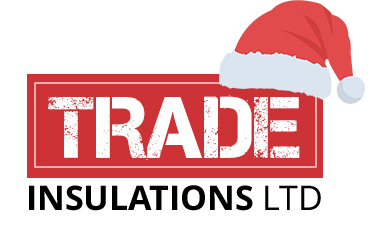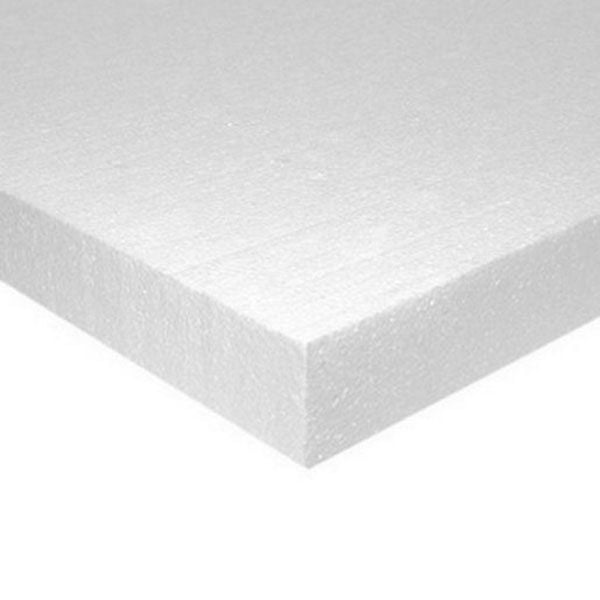EPS Insulation
EPS (Expanded Polystyrene) insulation is a kind of foam insulation that is used in both residential and commercial buildings. EPS insulation is very rigid, unlike other fluffier insulating materials. As an insulator, it can withstand extremes in temperature and can also reduce noise. Unlike other insulation materials, it is waterproof and has a very long lifespan. All these things make polystyrene insulation stand out as an exceptionally good product and it is popular within the building industry.
Showing all 4 results
EPS70 – 25mm Expanded Polystyrene Insulation Board (2400x1200mm) – 34.56m2 pack – 25mm EPS70
Original price was: £69.00.£54.99Current price is: £54.99.EPS70 – 100mm Expanded Polystyrene Insulation Board (2400x1200mm) – 8.64m2 pack – 100mm EPS70
Original price was: £69.00.£54.99Current price is: £54.99.EPS70 – 75mm Expanded Polystyrene Insulation Board (2400x1200mm) – 11.52m2 pack – EPS70 75mm
Original price was: £69.00.£54.99Current price is: £54.99.EPS70 – 50mm Expanded Polystyrene Insulation Board (2400x1200mm) – 17.28m2 pack – 50mm EPS70
Original price was: £69.00.£54.99Current price is: £54.99.EPS Insulation can be applied to a range of applications including:
- Floor insulation below the concrete slab
- Solid ground-floor constructions
- Above damp-proof membranes
- Below damp-proof membranes
- Masonry Walls
How is EPS – Expanded Polystyrene made?
EPS is a rigid, closed cell, thermoplastic foam material. It is produced from solid beads of polystyrene. Expansion is achieved by virtue of small amounts of gas contained within the polystyrene bead. The gas expands when heat in the form of steam is applied, thus forming closed cells of EPS.
Benefits of EPS Insulation
- Low thermal conductivity
- Lightweight and easy of handle and install
- Polystyrene is one of the lightest insulating materials.
- Has excellent mechanical properties making it good choice for load-bearing roof insulation, sub-pavement flooring, roadbuilding, as load-bearing insulation.
- Low water absorption
- Creates a more temperature-controlled environment
- unaffected by damp, humidity, or moisture.
- Chemical resistance – polystyrene is compatible with most other materials used in construction including cements, plasters, etc.
- When installed correctly the material will last for as long as the building itself.
- Saves money on energy bills.
- Resistant to corrosion.
- British Board of Agreement certification on flooring insulation
- Simple to install without the need of special tools
- Cost effective
How is EPS Insulation installed?
Below we have listed a guide to installing EPS boards.
Please note that EPS Boards must not be installed in contact with hot objects (e.g. chimneys, furnace and water flues, lighting fixtures, etc.)
Maintain gaps in accordance with the applicable building code.
Prep the wall first removing any obstacles or debris from the wall and anything that may
interfere with the attachment of the boards.
Cut the boards to size to match the wall height. The boards should also be cut as needed to fit tightly around pipes, ducts, vents, openings, or similar objects.
Using foam board compatible adhesive, it can be applied to the wall, or directly to the board, in vertical beads approximately 12” apart. Press/hold the board firmly to the wall.
Position wood battens at 16” or 24” on centre spacing (vertically or horizontally) over the boards and attach using Foam-Control concrete nails 24” on centre through the battens and insulation into the concrete wall.
Air seal all electrical, water, or gas penetration and any venting that pass to the outside with silicone caulk, acrylic latex caulk, or expanding spray foam.
Expanded Polystyrene FAQs
What is the difference between extruded and expanded polystyrene?
Expanded polystyrene or EPS is a thermoplastic foam material that we produce from solid beads of polystyrene whereas the extruded polystyrene or XPS is a foam material that we produce from solid polystyrene crystals. This is the key difference between expanded and extruded polystyrene. The expanded polystyrene has a less harmful effect on the environment than the extruded polystyrene when considering the production processes.
What is expanded polystyrene used for?
EPS is used for a variety of applications such as for thermal insulation boards in building constructions and packaging products. EPS insulation foam is also used in closed cavity walls, roofs, and floor insulation. It is the automatic choice for electronic goods cushioning and packaging and packaging for fragile times. EPS is also used within colder area due to its water-resistance such as wall in fridge freezer or in cases where food is stored on ice.
How is EPS cut?
EPS is cut with a sharp knife and scored along the board. The boards are also easily snapped however a blade is recommended to ensure straight lines when cut.
How long does EPS insulation last?
EPS is a durable, rot proof, water-resistant and permanent material when installed correctly. It will remain effective for the life of any application with no negative effects to be expected over a 100-year life cycle.
Is EPS fire resistant?
EPS is flammable, as is the case with so many other building materials. However, this is only relevant if you assess EPS as an exposed insulating material. Although foam insulation is relatively difficult to ignite, in the case of ignition, burning will readily spread over the exposed surface of the EPS and it will continue to burn until all EPS is consumed.

